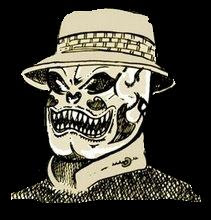In 1900, the body of an unidentified young woman, an apparent suicide, was pulled from the river Seine in Paris. Enchanted by the mysterious corpse’s beauty, a morgue worker made a plaster cast of the woman’s face. Copies of this “drowned Mona Lisa,” as Camus would later describe her, soon proliferated across Paris, appearing first in the city’s salons and finally in its literature. Nabokov wrote a poem titled “L' Inconnue de la Seine.” Rilke mentioned her in his only novel. Man Ray photographed her. A character in Louis Aragon’s novel Aurélien tries to resurrect her.
In the The Savage God: A Study of Suicide, Al Alvarez writes, “I am told that a whole generation of German girls modeled their looks on her… the Inconnue became the erotic ideal of the period, as Bardot was for the 1950s.”
In 1958, the Inconnue was used as the model for the face of Rescue Annie, a popular CPR training mannequin still in use today. Hers is perhaps the most kissed face of all time.
More on in the influence and authenticity of the Inconnue in this essay by Anja Zeidler.
In the The Savage God: A Study of Suicide, Al Alvarez writes, “I am told that a whole generation of German girls modeled their looks on her… the Inconnue became the erotic ideal of the period, as Bardot was for the 1950s.”
In 1958, the Inconnue was used as the model for the face of Rescue Annie, a popular CPR training mannequin still in use today. Hers is perhaps the most kissed face of all time.
More on in the influence and authenticity of the Inconnue in this essay by Anja Zeidler.





























































































































Ketch(col).jpg)






No comments:
Post a Comment